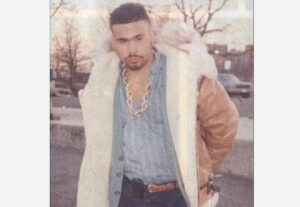
Few artists have left as indelible a mark on music as Jimi Hendrix. Widely regarded as one of the most innovative and influential guitarists in history, Hendrix redefined what the electric guitar could do, and his relationship with the Fender Stratocaster was at the heart of his groundbreaking artistry. This iconic guitar not only became a visual symbol of Hendrix’s legacy but also a key instrument in crafting his unmistakable sound.
The Early Days: Finding His Instrumental Voice
Before the Fender Stratocaster became his signature, Hendrix experimented with a variety of guitars. During his early career, he played lesser-known brands like the Supro Ozark 1560S and the Epiphone Wilshire. These guitars served him well during his time as a sideman for artists like Little Richard, the Isley Brothers, and Curtis Knight. However, they lacked the tonal versatility Hendrix craved for the boundary-pushing ideas that would later define his career.
When Hendrix discovered the Fender Stratocaster, it was a transformative moment. The Stratocaster, with its sleek contours, lightweight body, and innovative features, offered him a palette of sounds unmatched by other guitars of the time. Its three single-coil pickups, five-way selector switch, and floating tremolo bridge allowed Hendrix to explore sonic possibilities that were previously unimaginable.
The Stratocaster: A Canvas for Innovation
Hendrix’s connection to the Stratocaster was not merely about aesthetics; it was about functionality and versatility. He famously played the guitar upside down, restringing it to accommodate his left-handed playing. This unorthodox approach gave his sound a unique timbre, as the reversed string tension subtly altered the tonal characteristics of the instrument.
The Stratocaster’s ability to produce a wide range of tones—from shimmering cleans to raw, distorted growls—made it ideal for Hendrix’s experimental approach to music. Tracks like “Purple Haze,” “The Wind Cries Mary,” and “Voodoo Child (Slight Return)” demonstrate how he manipulated the Stratocaster’s controls, using the volume and tone knobs to create dynamic swells, and employing the tremolo arm for pitch bending and dive-bomb effects.
The Woodstock Strat: A Guitar for the Ages
Of all the Stratocasters Hendrix played, none is more iconic than the 1968 Olympic White Fender Stratocaster he used during his legendary Woodstock performance in August 1969. Known as the “Woodstock Strat,” this guitar became a symbol of the countercultural movement and Hendrix’s own artistic genius.
During his performance of “The Star-Spangled Banner,” Hendrix used the Stratocaster to produce a visceral, feedback-laden rendition of the American national anthem. By manipulating the guitar’s tremolo arm, tone knobs, and pickups, he transformed the anthem into a chaotic yet poignant soundscape that mirrored the turbulence of the era. The Woodstock Strat epitomized Hendrix’s ability to use the guitar as a tool for both musical and political expression.
Black Beauty: A Lesser-Known Favorite
Another notable instrument in Hendrix’s arsenal was his 1968 Fender Stratocaster known as “Black Beauty.” While the Woodstock Strat is celebrated for its historical significance, Black Beauty was a workhorse that Hendrix used extensively in the studio and on stage. Its sleek black finish and rosewood fingerboard gave it a distinctive look, but it was the guitar’s playability and tone that made it one of Hendrix’s favorites.
Hendrix used Black Beauty to record some of his most memorable tracks, including “All Along the Watchtower” and “Bold as Love.” Its warm, articulate tone was well-suited to the intricate chord voicings and searing solos that defined his style. Like the Woodstock Strat, Black Beauty reflected Hendrix’s deep understanding of the instrument and his ability to coax an extraordinary range of sounds from it.
Pushing the Boundaries of Guitar Technique
Hendrix’s mastery of the Stratocaster went hand-in-hand with his innovative approach to guitar playing. He pioneered techniques that are now staples of rock music, such as feedback manipulation, extensive use of the wah-wah pedal, and studio effects like phasing and flanging. The Stratocaster’s responsiveness and tonal clarity made it the perfect instrument for these experiments.
One of Hendrix’s most notable innovations was his use of feedback as a musical tool. By positioning the guitar near his amplifier, he could generate controlled feedback that added texture and intensity to his solos. The Stratocaster’s single-coil pickups were particularly sensitive to this technique, allowing Hendrix to create a symphony of overtones and harmonics.
Hendrix also made extensive use of the Stratocaster’s tremolo system, which he employed to achieve dramatic pitch bends and vibrato effects. On tracks like “Machine Gun,” his manipulation of the tremolo arm created an otherworldly soundscape that evoked the chaos and devastation of war. The Stratocaster’s durability and stability under such intense use were a testament to its design.
Beyond the Stratocaster: Other Guitars in Hendrix’s Arsenal
While the Stratocaster was Hendrix’s primary instrument, he occasionally used other guitars to achieve specific sounds. For example, he played a Gibson Flying V during the Band of Gypsys era, particularly for its heavier, more sustained tone. This guitar can be heard on performances like “Who Knows” and “Machine Gun,” where its powerful sound complemented the raw, improvisational style of the band.
Hendrix also used a Gibson SG Custom for his performance on “The Dick Cavett Show” in 1969, and an Epiphone FT79 acoustic guitar for intimate recordings like “Hear My Train A Comin’.” These instruments highlight his versatility and willingness to explore different tonal possibilities, even as the Stratocaster remained his go-to choice.
The Stratocaster’s Enduring Legacy
Hendrix’s association with the Fender Stratocaster elevated the instrument to legendary status. Today, the Stratocaster is synonymous with rock music, thanks in large part to Hendrix’s pioneering work. His use of the guitar inspired countless musicians, from Eric Clapton and Stevie Ray Vaughan to John Mayer and Gary Clark Jr.
Fender has honored Hendrix’s legacy with numerous signature models, including replicas of the Woodstock Strat and other guitars he used throughout his career. These instruments serve as a testament to his enduring influence and the timeless appeal of the Stratocaster.
Impression
Jimi Hendrix and the Fender Stratocaster were a perfect match, each amplifying the other’s strengths to create a legacy that transcends music. The Stratocaster’s versatility, innovative design, and unique tonal qualities provided Hendrix with the tools he needed to push the boundaries of rock music. In turn, Hendrix’s groundbreaking techniques and visionary approach solidified the Stratocaster’s place as one of the most iconic instruments in history.
Whether it was the searing solos of “Purple Haze,” the tender melodies of “Little Wing,” or the electrifying performance of “The Star-Spangled Banner” at Woodstock, Hendrix’s Stratocasters were more than just instruments—they were extensions of his artistic soul. Today, they remain symbols of his genius and a reminder of the limitless possibilities of music.
No comments yet.








